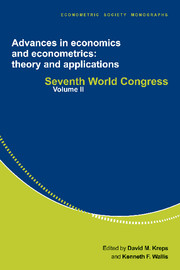Book contents
- Frontmatter
- 1 Incentives and careers in organizations
- 2 Endogenous growth: lessons for and from economic history
- 3 Microtheory and recent developments in the study of economic institutions through economic history
- 4 Poverty traps
- 5 Microenterprise and macropolicy
- 6 Markets in transition
- 7 Transition as a process of large-scale institutional change
- 8 A Schumpeterian perspective on growth and competition
- 9 Learning and growth
- Index
5 - Microenterprise and macropolicy
Published online by Cambridge University Press: 05 January 2013
- Frontmatter
- 1 Incentives and careers in organizations
- 2 Endogenous growth: lessons for and from economic history
- 3 Microtheory and recent developments in the study of economic institutions through economic history
- 4 Poverty traps
- 5 Microenterprise and macropolicy
- 6 Markets in transition
- 7 Transition as a process of large-scale institutional change
- 8 A Schumpeterian perspective on growth and competition
- 9 Learning and growth
- Index
Summary
SOME BACKGROUND AND MOTIVATION: THREE WELL-KNOWN PROGRAMS
Motivation for this contribution is best provided by describing briefly three relatively recent experiences in the world of banking and finance:
1 The Grameen Bank in Bangladesh was started in 1976 by a Professor of Economics, Muhammad Yunus, Chittagorn University. Bangladesh is a poor country with low levels of average per capita income, high rates of infant mortality, and low levels of literacy especially among women. Believing that economically active but assetless poor households were being excluded from official lending sources and exploited by usurious moneylenders, the Grameen Bank began lending to borrower groups of five people who underwrite each other's loans, promising to pay as a group to the bank in case a member defaults. Currently, the average loan is relatively small, $80.00, and the nominal interest rate is 16.5 percent, with inflation at 10 percent. Again, no collateral is required. Strikingly, the repayment rate of loans is 98 percent, on average, with women constituting the majority of borrowers. This lending system continues to attract donor attention, e.g., the Ford Foundation, and continues to expand dramatically, with the number of borrowers, number of villages, and credit outstanding often doubling from year to year. Grameen-type lending systems have been introduced into Malaysia, Nepal, and, in the United States, into the city of Chicago and rural Arkansas.
- Type
- Chapter
- Information
- Advances in Economics and Econometrics: Theory and ApplicationsSeventh World Congress, pp. 160 - 209Publisher: Cambridge University PressPrint publication year: 1997



